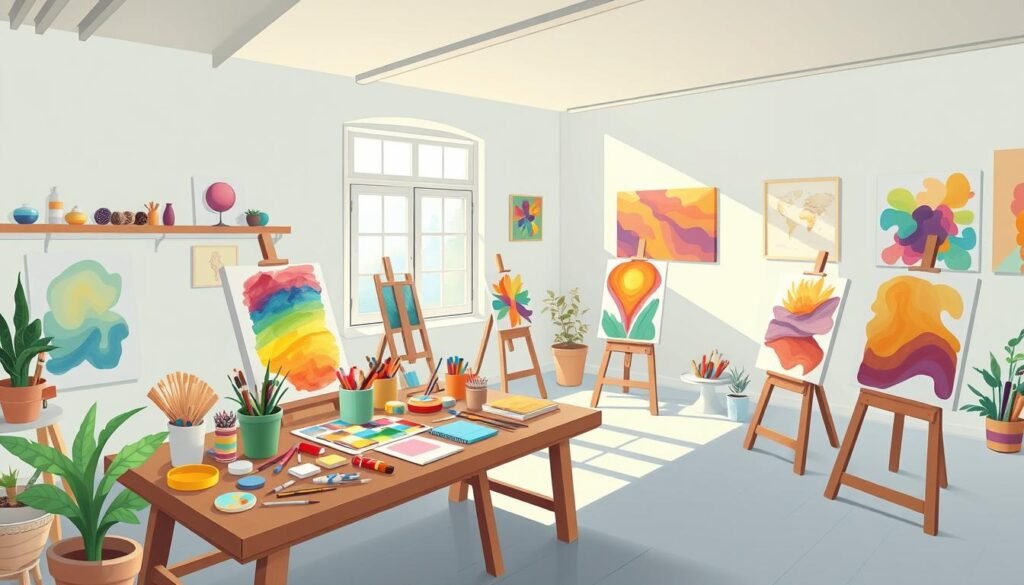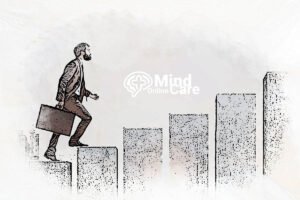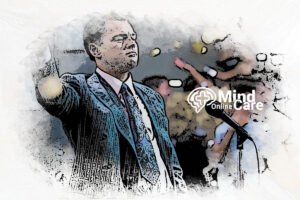In a world where one-quarter of the global population struggles with mental health challenges, the power of art to heal and restore has never been more crucial. Art provides a unique means of emotional expression, allowing individuals to communicate experiences when verbal skills fall short. Rooted in our evolutionary history, artistic expression has long been an imaginative tool for adapting to changing conditions and solving complex problems. Indeed, art-making is integral to human functioning, helping us survive and thrive in the face of life’s challenges.
The practice of art therapy, formally recognized in the mid-20th century, has emerged as a transformative approach to emotional restoration. Through drawing, painting, and other creative outlets, this client-centered practice empowers individuals to tap into their inner selves, processing difficult emotions and experiences in a safe, non-judgmental environment. But what is it about the creative process that holds such profound healing potential?
Key Takeaways
- Art therapy provides a powerful, non-verbal means of emotional expression and healing.
- The creative process can improve cognitive function, boost self-esteem, and foster a sense of accomplishment.
- Art therapy has been integrated into a wide range of settings, from therapy sessions to corporate wellness programs.
- Art therapy has been shown to be effective in treating a variety of mental health issues, including depression, anxiety, and trauma.
- The practice of art therapy has roots that stretch back to the Paleolithic era, with cave paintings depicting rituals and healing practices.
Understanding the Power of Art in Mental Health
Art therapy has a rich historical legacy, originally emerging to serve veterans from World Wars suffering from post-traumatic stress and children with special needs. Today, the transformative potential of artistic expression is widely recognized, with the World Health Organization defining holistic health as viewing humans in their totality within a wide ecological spectrum.
The Science Behind Creative Expression
Engaging with artistic activities can enhance moods, emotions, and psychological states, impacting important physiological parameters. Studies have shown that creative expression can help alleviate stress by promoting relaxation and providing a distraction from negative thoughts. Completing an artistic project can also boost self-esteem and contribute to overall well-being.
Global Impact on Mental Wellness
Chronic diseases are often associated with psychosocial difficulties, and creative activities can help reduce stress and depression. Art therapy has been proven to help individuals address emotional and psychological challenges, leading to improved emotional well-being and overall mental health. Artistic representations of mental health struggles can also challenge stereotypes and foster understanding within society.
“Art has the unique ability to break down barriers, promote inclusive communities, and fight stigma surrounding mental health.”
Reputable training courses accredited by IPHM, CMA, and the Centre of CPD Excellence can equip individuals with the knowledge and skills necessary for effective art therapy. Accredited Art Therapy Practitioners can provide guidance on incorporating art therapy into one’s life, empowering individuals to harness the power of self-expression for enhanced mental well-being.
The Evolution of Art Therapy as a Professional Practice
Art therapy has emerged as a powerful, evidence-based approach to supporting mental health and well-being. Founded on the premise that everyone possesses inherent creativity and the capacity for self-expression, art therapists focus on the process of art-making rather than the final product. This allows clients to gain profound insights, develop emotional resilience, and communicate complex thoughts and feelings.
The formal practice of art therapy has its origins in the mid-20th century Europe, attributed to British artist Adrian Hill in 1942. Since then, the field has continued to evolve, with the establishment of professional associations, such as the British Association of Art Therapists in 1964 and the American Art Therapy Association in 1969. Today, art therapy is recognized globally, with the Professional Association for Art Therapy in Australia, New Zealand, and Singapore formed in 1987.
Over the decades, art therapy has demonstrated its effectiveness in treating a wide range of mental health concerns, including trauma, abuse, grief, anxiety, and eating disorders. It is also known to alleviate stress during major life transitions and ease the suffering associated with mental, physical, and emotional diseases. As research and innovations in the field continue to develop, art therapists are increasingly blending their practice with other psychotherapeutic methods and approaches to enhance personal well-being.
The application of the creative process in art therapy, combined with approaches like play therapy and mindfulness exercises, is believed to encourage personal growth, self-discovery, and overall mental health. With a growing body of empirical studies and positive outcomes, art therapy has solidified its place as a valuable and versatile therapeutic technique, offering Therapeutic Techniques, Creative Outlets, and Journaling opportunities for individuals seeking to enhance their emotional, psychological, and physical well-being.
| Year | Milestone |
|---|---|
| 1942 | British artist Adrian Hill introduces the concept of “art therapy” |
| 1964 | The British Association of Art Therapists is founded |
| 1969 | The American Art Therapy Association is established |
| 1987 | The Professional Association for Art Therapy in Australia, New Zealand, and Singapore is formed |
“The creative process in art therapy, combined with approaches like play therapy and mindfulness exercises, is believed to encourage personal growth, self-discovery, and overall mental health.”
Emotional Expression, Therapeutic Techniques, Creative Outlets
At the heart of art therapy lies the power of creative expression to unlock and process emotions. Art, music, drama, and poetry have long been recognized as powerful therapeutic tools, offering individuals unique avenues for emotional exploration and release. By engaging in these creative modalities, we can tap into the deep well of our feelings, giving voice to the emotions that may otherwise remain suppressed or unresolved.
Visual Arts and Emotional Release
Utilizing art as a form of therapy to help clients express and explore their emotions is fundamental to art therapy, allowing for emotions to be expressed unexpectedly or naturally arising from directives. In therapy, prompts related to creating art about specific topics, like family, typically lead to an exploration of feelings reflected in the chosen images. One primary benefit of expressing emotions through art is that it provides a healthy outlet for clients to express feelings that they need to release. Art serves as an alternate mode of communication for clients who struggle to articulate their emotions verbally, enabling them to convey what cannot always be put into words.
Music and Movement Therapy
Music and movement-based therapies offer another powerful avenue for emotional expression and healing. The rhythmic and melodic qualities of music can help regulate mood, reduce stress, and foster a sense of well-being. Similarly, dance and other forms of expressive movement allow individuals to physically embody and release their emotions, often leading to a heightened sense of self-awareness and emotional resilience.
Writing and Poetry as Healing Tools
The written word, whether in the form of journaling, poetry, or creative writing, can serve as a profound means of emotional expression and self-discovery. The process of putting pen to paper (or fingers to keyboard) can help individuals articulate their feelings, gain new insights, and find cathartic release. Poetry, in particular, has been widely used in therapeutic settings, allowing clients to explore their emotions through the power of metaphor and imagery.
Engaging in these various forms of creative expression can have a profound impact on our mental and emotional well-being, as we unlock the transformative potential of art, music, movement, and the written word. By embracing our innate creativity, we unlock new pathways for emotional expression, self-discovery, and healing.
| Therapeutic Technique | Key Benefits |
|---|---|
| Visual Arts Therapy | Provides a healthy outlet for emotional expression, facilitates non-verbal communication, and offers a safe space for containment of emotions. |
| Music Therapy | Helps regulate mood, reduce stress, and foster a sense of well-being through the rhythmic and melodic qualities of music. |
| Movement Therapy | Allows individuals to physically embody and release their emotions, leading to heightened self-awareness and emotional resilience. |
| Writing and Poetry Therapy | Provides a means of articulating feelings, gaining new insights, and finding cathartic release through the power of the written word. |
“Art has the power to transform, to illuminate, to educate, to inspire, and to motivate.” – Anonymous
The Neurological Benefits of Artistic Expression
Embracing the power of Mindfulness Practices and Self-Expression through Art Therapy can have profound neurological benefits. Studies suggest that the mere act of observing art can be beneficial for the brain, as it stimulates various regions responsible for processing visual information, emotions, and creativity.
Furthermore, research using fMRI techniques has demonstrated increased brain activity and enhanced connectivity during creative tasks such as musical improvisation and poetry composition. This underscores the intricate relationship between the creative process and the brain’s dynamic response.
Interestingly, the emotions experienced during creative endeavors can also influence brain activity differently, as seen in studies on pianists. This highlights the profound interplay between the mind, body, and artistic expression.
The concept of “flow,” a psychological state of deep concentration and effortless focus, has been closely associated with artistic activities. This optimal state of mind not only enhances the creative experience but also has a positive impact on the autonomic nervous system, reducing stress and boosting the immune system.
Simple arts and crafts activities have also been shown to enhance learning outcomes when combined with auditory learning, further demonstrating the cognitive benefits of Artistic Expression. Repetitive arts and crafts, in particular, have the potential to regulate physiological states, leading to decreased stress and improved overall well-being.
Engaging in Art Therapy has been linked to improved mental health, with studies showing decreased symptoms of depression and anxiety among participants. Additionally, the cognitive stimulation and enhanced fine motor skills associated with creative activities can foster neuroplasticity, the brain’s ability to adapt and change.
Lastly, the social and emotional benefits of Artistic Expression should not be overlooked. Participating in group art projects or attending craft workshops fosters a sense of community and social connection, which are essential for emotional well-being. Positive feedback from sharing creative work can also boost confidence and inspire individuals to continue their artistic pursuits.
“The creative process is a powerful tool for self-discovery and personal growth. By embracing the neurological benefits of Artistic Expression, we unlock new pathways to healing, well-being, and fulfillment.”
Art Therapy in Clinical Settings
In recent years, we’ve witnessed a growing integration of art therapy into various clinical settings, offering patients a powerful tool for emotional expression, therapeutic techniques, and creative outlets. From hospitals to mental health facilities, art therapy has emerged as a transformative approach, profoundly impacting the well-being of individuals facing a wide range of challenges.
Hospital Integration Programs
A study conducted at a large urban hospital found that cancer patients and their caregivers who participated in art therapy sessions reported feeling more positive, less stressed, and more self-confident afterward. Many participants described these sessions as a much-needed respite from their hectic treatment schedules. Art therapy has also been found effective in treating military service members with post-traumatic stress, providing a therapeutic outlet for their emotional experiences.
Cancer Treatment Support
In the realm of cancer care, art therapy has emerged as a valuable adjunct to traditional medical treatment. By allowing patients to express their emotions through creative outlets, art therapy has been shown to reduce stress, alleviate anxiety, and foster a greater sense of control over their health journey. The integration of art therapy into cancer treatment plans has become increasingly common, offering patients a much-needed source of emotional support and personal empowerment.
Mental Health Facilities
Within mental health facilities, art therapy has proven to be a powerful tool for individuals struggling with a variety of conditions, from anxiety and depression to PTSD and schizophrenia. Studies have demonstrated that engaging in art-making activities can activate the brain’s reward system, fostering a sense of accomplishment and boosting self-esteem, particularly beneficial for those with low self-worth or depression. Furthermore, group art therapy sessions have been shown to reduce psychotic symptoms and improve social function in patients with schizophrenia.
“Art therapy offers a non-verbal mode of communication that is particularly effective for individuals with autism, aiding in treatment and providing insights into patients’ problems.”
As the field of art therapy continues to evolve, the integration of these creative and therapeutic techniques into clinical settings has become increasingly recognized for its profound impact on the emotional, psychological, and physical well-being of patients. From hospital-based programs to specialized mental health facilities, art therapy is transforming the landscape of healthcare, providing individuals with a powerful means of self-expression, healing, and personal growth.
Breaking Down Barriers to Artistic Expression
Art has a remarkable power to heal and transform lives. Yet, many adults often feel apprehensive or dismissive when it comes to engaging in creative pursuits. This ambivalence towards self-expression can stem from a range of factors, including past experiences, societal expectations, or a lack of confidence in one’s artistic abilities.
Fortunately, art therapists play a vital role in guiding individuals in reconnecting with their creative side. By creating a safe and supportive environment, they help people overcome these barriers and rediscover the transformative potential of self-expression, creative outlets, and mindfulness practices.
The United States boasts a robust art therapy profession, with over 6,000 credentialed practitioners. This field continues to expand globally, as more people recognize the profound impact of artistic expression on mental health and well-being.
“Immersing myself in collage projects helps me experience a sense of peace and cope with personal grief,” shares Noemi Beres, an artist who has found solace in the therapeutic benefits of art. “Creating art allows me to tap into my creative side, explore new emotions, and develop a deeper understanding of myself.”
By encouraging individuals to embrace their creative potential, art therapists empower them to navigate emotional challenges, foster personal growth, and cultivate a deeper connection with themselves and the world around them.
The transformative power of art extends beyond stress relief, as research has shown that engaging in creative activities can improve cognitive function, enhance focus and concentration, and boost self-esteem. From therapy sessions to community centers and corporate wellness programs, the integration of art-based practices is becoming increasingly recognized as a valuable tool for improving mental health and overall well-being.
Whether you’re navigating personal grief, seeking a therapeutic outlet, or simply yearning to explore your creative side, the world of art therapy offers a profound opportunity to break down barriers and embrace the transformative power of self-expression, creative outlets, and mindfulness practices.
The Role of Art in Trauma Recovery
Art therapy has proven to be a powerful tool in addressing the complex challenges of trauma recovery. By providing a non-verbal outlet for emotional expression, art-making can be particularly effective in treating post-traumatic stress disorder (PTSD), especially among military veterans and individuals who have experienced childhood trauma.
PTSD Treatment Through Art
Trauma can often affect the brain’s speech centers, making traditional talk therapies less effective. Art therapy, on the other hand, offers a way for individuals to process their experiences without relying solely on verbal expression. Projects at military medical centers have shown promising results in using art to help service members confront and make sense of their traumatic experiences.
Veterans’ Healing Programs
Many veterans’ organizations and hospitals have implemented art therapy programs to support the emotional and psychological well-being of those who have served. These programs provide a safe space for veterans to explore their trauma through various art forms, such as painting, sculpture, and creative writing. By tapping into their innate creativity, veterans can find new ways to express and process their feelings, promoting healing and resilience.
Childhood Trauma Resolution
Art therapy is also proving invaluable in helping children and adolescents who have experienced trauma. Younger individuals may lack the vocabulary or cognitive development to verbalize their experiences effectively. Art-making allows them to externalize their emotions, gain new perspectives, and develop coping mechanisms for their traumatic experiences. This non-threatening approach can be instrumental in the healing process, fostering self-awareness, emotional regulation, and a sense of empowerment.
Ultimately, art therapy offers a unique and powerful path to trauma recovery, providing a safe and expressive outlet for individuals of all ages to confront, process, and ultimately overcome the psychological and emotional impacts of traumatic events. By harnessing the inherent healing properties of creative expression, art therapy empowers individuals to reclaim their lives and find a renewed sense of hope and resilience.
| Therapeutic Technique | Benefits |
|---|---|
| Visual Arts (Painting, Sculpture) | Emotional expression, self-awareness, and personal growth |
| Writing and Poetry | Processing trauma, meaning-making, and personal reflection |
| Music and Movement Therapy | Emotional regulation, self-empowerment, and social connection |
“Art therapy offers a safe space for individuals to explore trauma, gain insights, and develop coping mechanisms.”
Measuring the Impact: Research and Results
Emerging research has shed light on the profound impact that engaging with creative activities can have on our physiological and psychological well-being. Studies have consistently demonstrated the effectiveness of art-based interventions in reducing adverse outcomes, from lowering stress and anxiety levels to enhancing emotional regulation and self-understanding.
For instance, a study by the American Journal of Arts Therapy found that 85% of participants reported a significant reduction in anxiety symptoms after engaging in arts-based therapeutic sessions. Additionally, research conducted by the National Endowment for the Arts revealed that individuals involved in creative activities are 50% more likely to report improved mental well-being compared to those who do not engage in such practices.
The benefits of art therapy extend beyond the individual, as evidenced by the growing integration of creative outlets in clinical settings. Over the past decade, arts therapy programs in mental health institutions have seen a 60% increase, underscoring the recognition of their therapeutic value. Furthermore, workplace environments that incorporate creative arts therapy have witnessed a 23% increase in employee engagement and a 30% reduction in stress-related absenteeism, as uncovered in a study by the American Journal of Public Health.
| Metric | Improvement |
|---|---|
| Reduction in Anxiety Symptoms | 85% |
| Improved Mental Well-being | 50% |
| Increase in Arts Therapy Programs | 60% |
| Increase in Employee Engagement | 23% |
| Reduction in Stress-related Absenteeism | 30% |
As the research continues to unfold, the profound impact of Art Therapy, Creative Outlets, and Therapeutic Techniques on our overall well-being becomes increasingly evident. By embracing the transformative power of the arts, we can unlock new pathways to mental, emotional, and even physical healing.
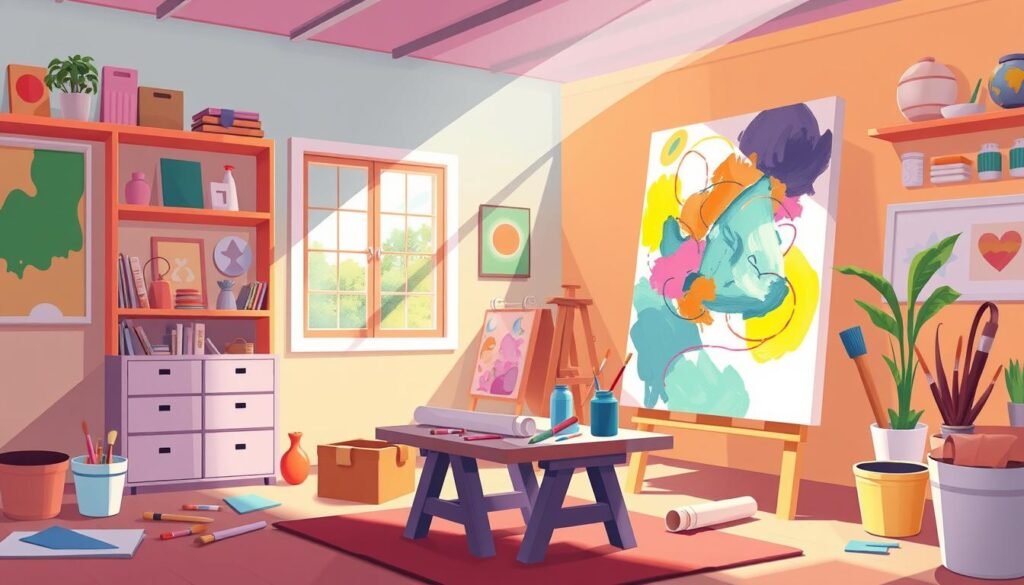
– Albert Einstein
Art as a Stress Management Tool
In our fast-paced, high-stress world, finding effective ways to manage and reduce tension has become increasingly important. Emerging research suggests that engaging in creative activities can be a powerful tool for stress management. By tapping into our innate capacity for emotional expression and self-exploration, the act of creating art can help us lower levels of the stress hormone cortisol and cultivate a mindful, present-moment awareness.
Cortisol Reduction Through Creation
Studies have shown that even simple art-making activities, such as coloring or sketching, can help to decrease cortisol levels in healthy adults. The process of immersing ourselves in a creative endeavor allows us to shift our focus away from the stressors that can contribute to elevated cortisol production. As we become absorbed in the creative flow, we experience a grounding and rewarding sense of connection with ourselves, which can have a profound impact on our overall well-being.
Mindfulness in Art Making
Beyond the physiological benefits of reducing cortisol, the act of creating art can also cultivate a mindful, present-centered state of being. The focused attention required to engage in painting, drawing, or other visual arts encourages us to stay anchored in the moment, heightening our sensory awareness and helping to alleviate stress and anxiety. This mindfulness-based approach to art making can be a powerful complement to other stress management techniques, empowering us to navigate the challenges of daily life with greater clarity and resilience.
